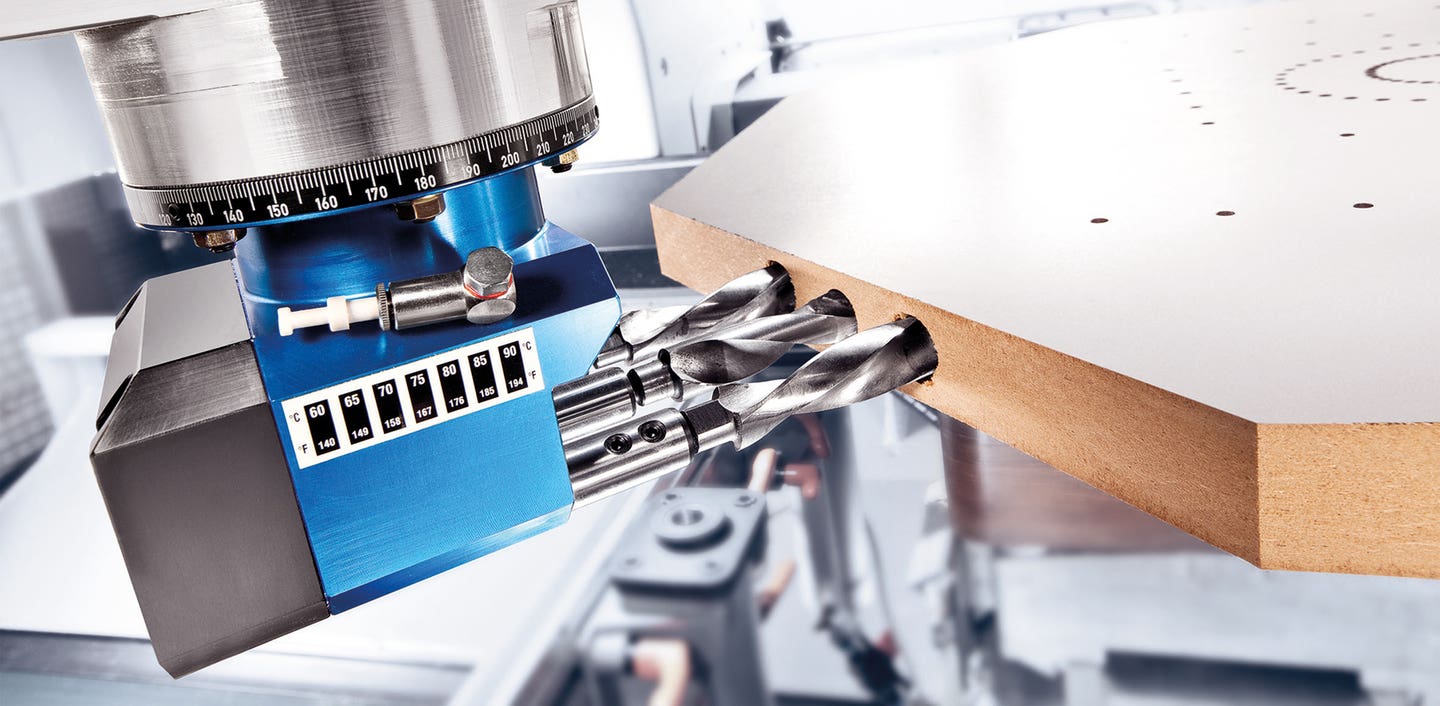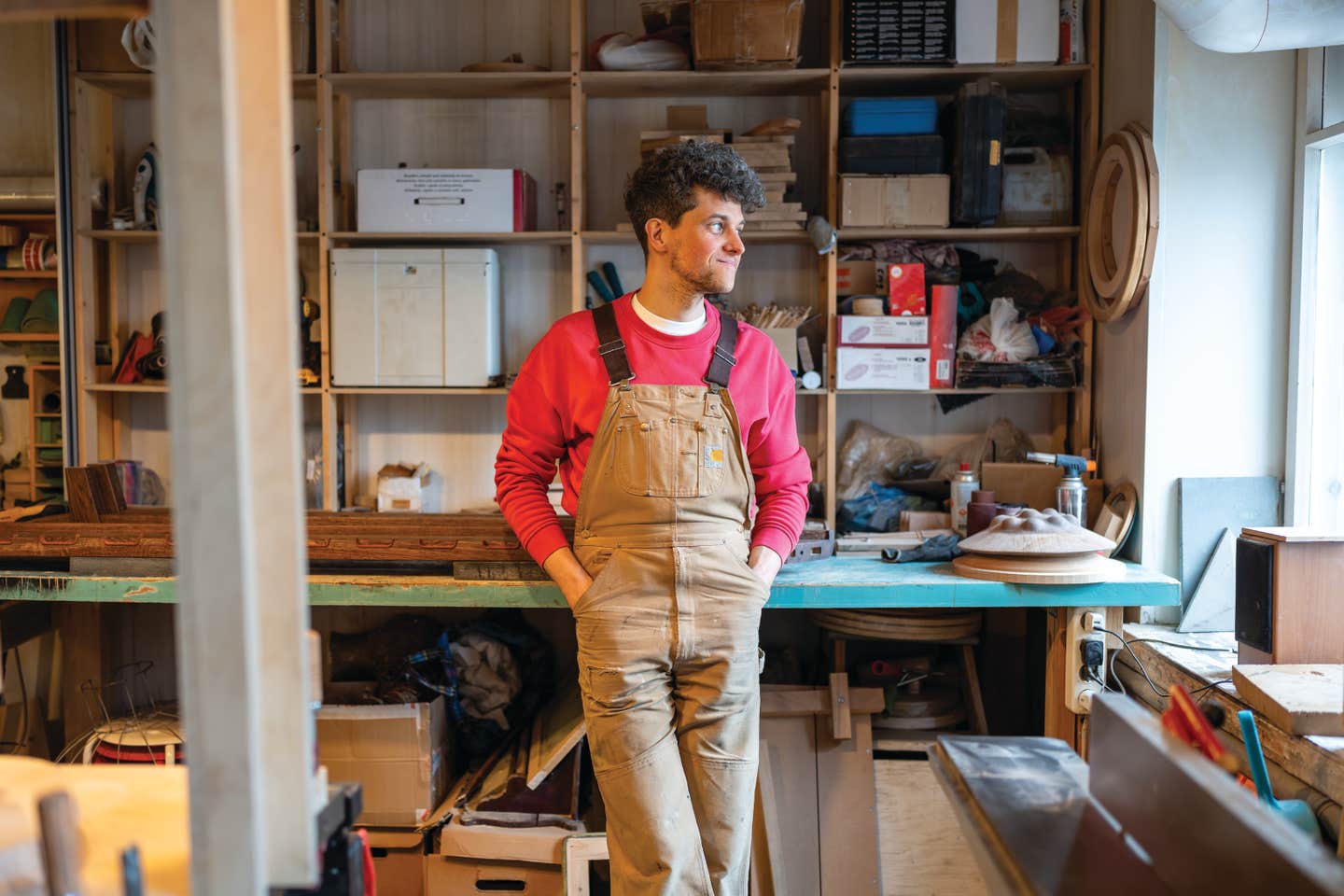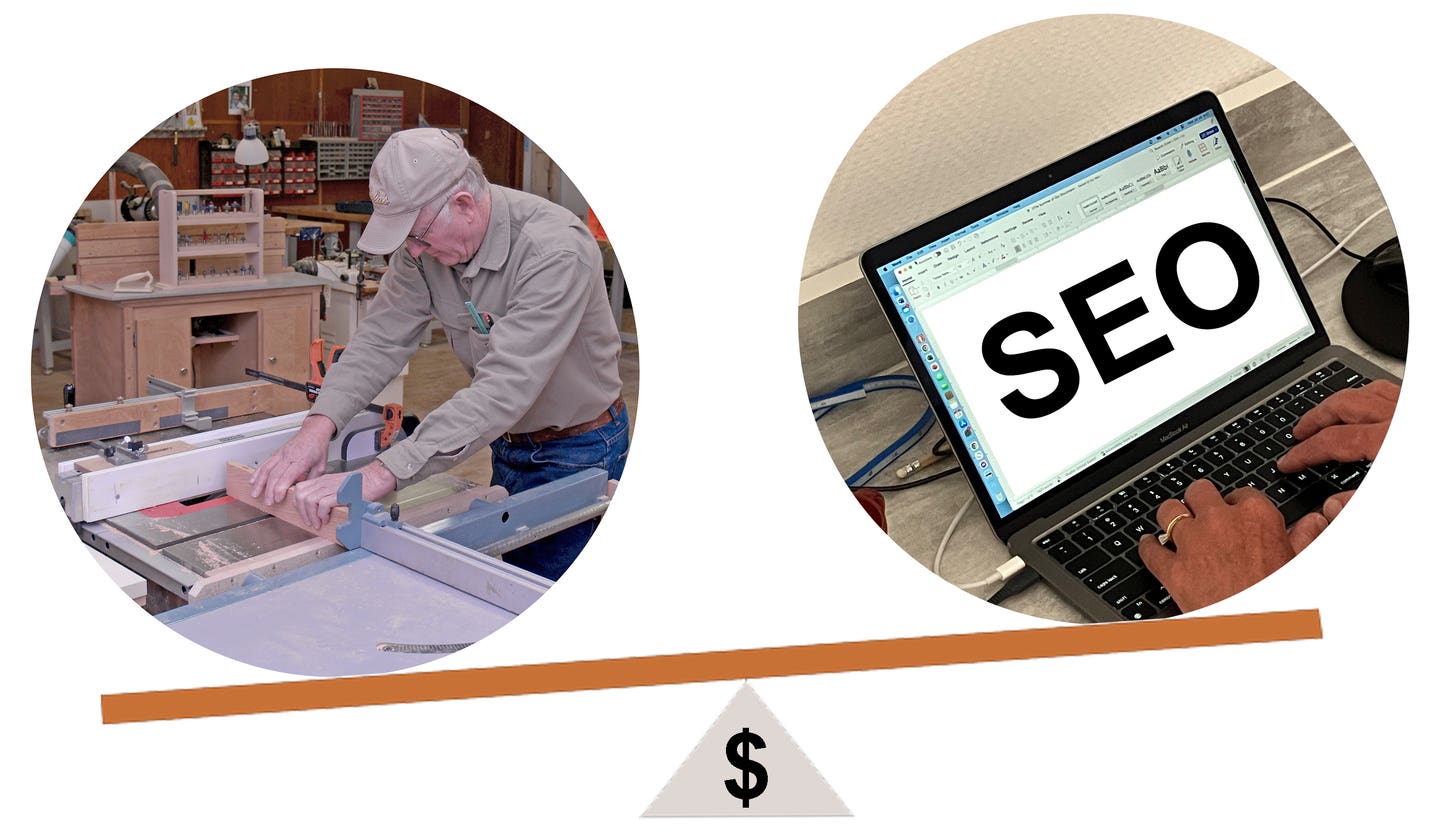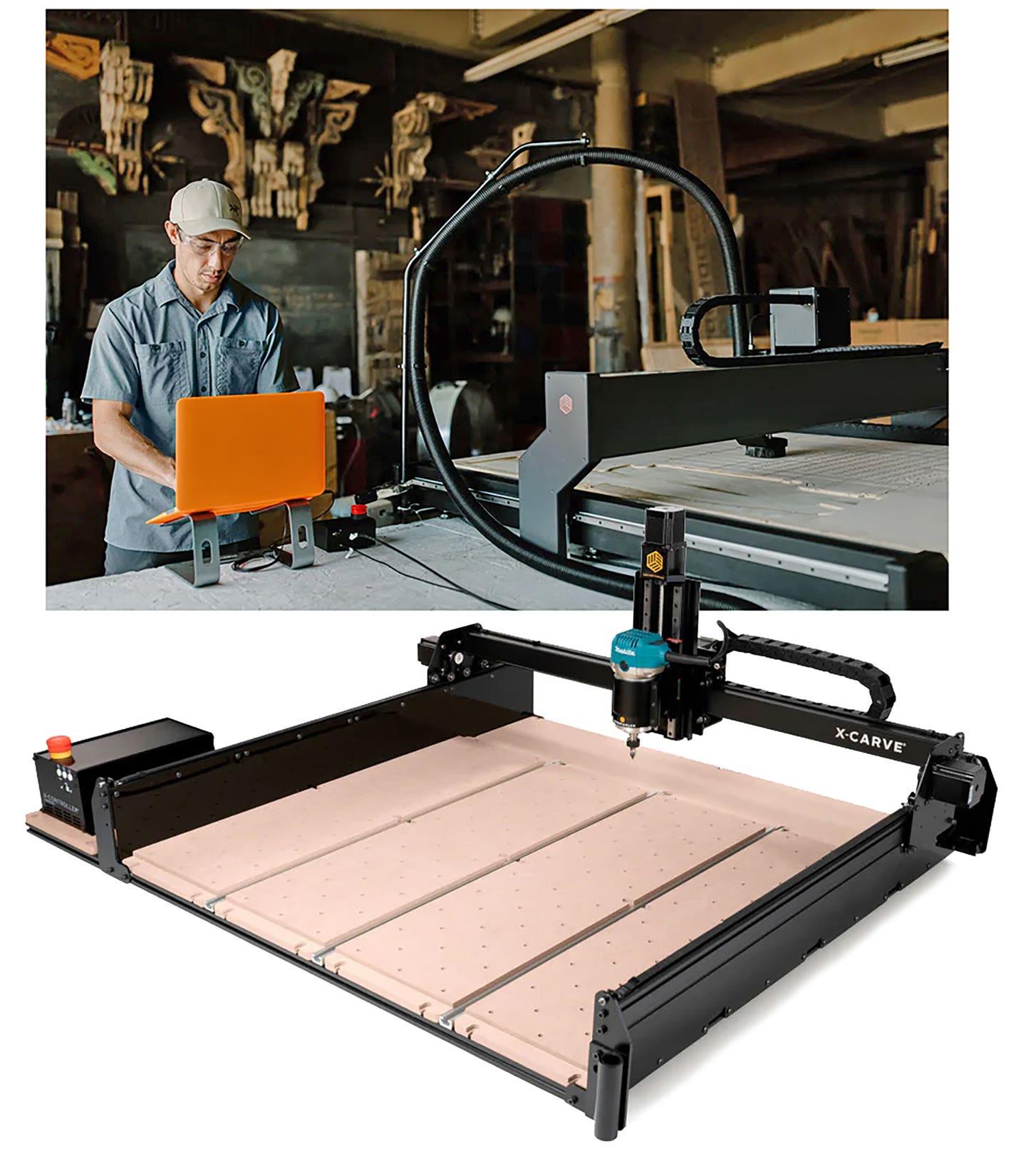Specialty Sanders
Specialty Sanders: A look at niche options for adding that finishing touch
We’re all familiar with disc, belt, palm and stroke sanders, but sometimes these mainline machines and power tools don’t quite meet a specific need. Fortunately, several manufacturers still find it profitable to cater to niche needs, and there are numerous options on the market for turners, luthiers and even auto body shops that can be adapted for use in a cabinet or furniture shop.
There are even some unusual machines made just to give casework builders a better sanding option, such as the relatively new 20” vertical oscillating belt sander from Grizzly Industrial (catalog item G0936). This unique edge sander offers an effective sanding height of over 13” and can be used like a disc sander because of its oscillating feature – but it gives the shop a full 20” of useable sanding surface for panels. It can also be used like a traditional edge sander for fast and clean panel or door edges.
Several manufacturers are now catering to robots by offering tools that are all set up for connection to cobots and other industrial robotic arms. Mirka’s Airos line is a good example as it has several sanding options in a range of pad diameters from 1-1/4”) to nearly 6”. These are automatic, integrated, random orbital sanders that are engineered to carry out intensive, high workload sanding, where precision and minimal maintenance is critical. They’re built inside a sturdy and light aluminum housing with an ISO 9409-1 compatible flange for mechanical robot coupling. Another option is the OnRobot sander from Universal Robots, while GDP Industrial Tooling also offers an innovative and impressive oscillating sanding head for CNCs.
For those of us who haven’t invested in a robotic arm yet, the ergonomics of random orbit sanders is still important. A comfortable grip is essential for all-day work, and most manufacturers have come a long way in this area over the past few years. Switching can still be an issue, especially if the on/off switch is hidden under the tool handle. The corded Ekosand line from Uneeda has a very comfortable and intuitive beavertail spring-loaded switch on the top of the sander that works just like the pneumatic units in body shops. That sander more popular option of sending debris through a small orifice that’s integrated into the handle.
One sanding option that may not be too familiar to cabinetmakers is the portable wheel sander. While obviously not as controllable or heavy duty as brush sanders, such as Laguna’s 19-38 or the 13” floor model, these hand-held units can be very useful on small jobs and at the worksite. For example, the 9741 Wheel Sander from Makita can deliver smooth and even surface material removal, making it a great option for refinishing or texturing. It has an adjustable front roller for uniform pressure, and hardwood floor installers can get flush to a wall with the nose and side of the sander. The 9741 has a low center of gravity and a well-balanced design for even surface sanding. There’s an electric brake, and it accepts five different sanding wheels including slit paper for sanding, a wire brush for metal finishing, and nylon brush wheels in 80-, 100-, and 240-grit.
Another wheel sander is the Contour SCT (Surface Conditioning Tool) by Eastwood. It can tackle demanding surfaces, including some of the more adventurous countertop materials that are finding their way into kitchens of late. The tool can use many Eastwood Drum options and is a popular sanding option among wooden deck refinishers. Hardin Industrial also makes a wheel sander, the HD-5800, and Woodcraft offers The Restorer.
One aspect of unusual sanders is their ability to reach into and around tight spaces. Chicago Pneumatic makes several thin belt sanders including the CP9779 which uses a 3/8” wide by 13” long belt to reach into very tight spots with its finger platen. It delivers an impressive 22,000 rpm and was designed initially, as many woodshop sanders are, for autobody work. Another innovative sanding option from the same manufacturer is the CP7268 straight-line sander that uses air power and takes 2-3/4” x 17-1/2” sheets of paper. Its long length, D handle and forward knob all help to make it very controllable on long, thin edges and parts such as stiles and rails.
Another finger sander, the BFE 9-20 from Metabo, was initially created for autobody grinding, burnishing and deburring in difficult to reach places. Metabo describes it as a ‘band file’ and its 18” long belts come in widths from 1/4” to 3/4”. It has thumbwheel controlled Vario-Constamatic (VC) full wave electronics that makes it ideal for working on materials requiring customized speeds such as veneers, and at speeds which remain almost constant under load.
Dynabrade offers the Dynafine raised panel detail sander (item 57906). It comes with a 57956 raised panel pad already mounted on the tool, which offers unique angled edges for sanding in tight corners and on raised panel edges. The pad is 4” long x 3/4” wide and is made of 1/2” medium-density urethane. The pad accepts both coated abrasive and non-woven nylon sheets and is an excellent option for sanding raised panels and linear profiles on furniture, shutters, moldings and more.
Need to touch up miters on cabinet doors or picture frames? There’s a cordless tool for that and it doesn’t even need a battery. The Precision Sander Elite from Logan Graphic Products is a very simple machine that has a hand-operated disc, a table and a fence that can be switched from left to right. It touches up miter cuts and delivers perfect 45-degree ends in seconds.
Maksiwa makes a motorized version, a disc sander that rotates at just 1,700 rpm. It’s got enough torque for most tasks, but that slow speed offers better control when working with softwoods and small, delicate parts.
Festool makes an interesting muscle-powered sanding option. The company’s Sanding Block (item HSK-A 80x130) is an ergonomic, comfortable hand sanding block but what’s unusual is that it can be hooked up to a shop vacuum for dust control. It’s perfect for detail sanding where power sanding would be too aggressive, and it has a hard rectangular pad for edge work and corners. That rectangular design is compatible with the full line of Festool 80 x 133mm abrasives (the same abrasives used with the RTS 400 and LS 130 sanders), so it can handle anything from veneers to solid hardwoods.
Triton has introduced a pair of orbital sanders, called the Dynamic Duo. Model TQTRSS is a quarter-sheet palm sander with a square base, while model TTRDSS offers a one-third sheet sanding pad.
Bosch is improving dust collection on random orbit sanders with a design that captures dust at the pad. The GET65-5 and GET65-6 sanders have both a standard random-orbit mode and a direct-drive, eccentric-orbit ‘turbo’ mode for aggressive stock removal. The turbo mode delivers three times the removal rate of standard random-orbit action. There’s an enhanced multi-hole pad system that is compatible with a wide variety of abrasive discs and an integral pad-dampening braking system that helps prevent swirl marks.
DeWalt also offers a 5” sander with a dust shroud and a hookup right at the disc for a shop vacuum. The DWE6041DS is a variable-speed corded tool with an orbital action and is designed for fast stock removal.
Klingspor offers the complete King Arthur sanding system that can handle a wide range of specialty shapes for turners, carvers, and traditional furniture builders. It includes a Guinevere motor, a flexible shaft with a chuck, five inflatable sanders with sleeves in several grits, a hand pump, and a cleaning stick.
One of the most unusual belt sanders is the DNYSYSJ multi-function desktop belt machine. Available online, it can sand, polish, sharpen and grind at variable speeds and in either vertical or horizontal configurations and in forward or reverse settings.
All these sanding options can help a shop deliver a smoother and more scratch-free surface if used correctly. They can also reduce the drudgery and tedium of sanding, but as our shop teachers used to say, sharp tooling and diligent set-ups on cutting tools can also reduce the need for sanding.
This article was originally published in the May 2022 issue.







